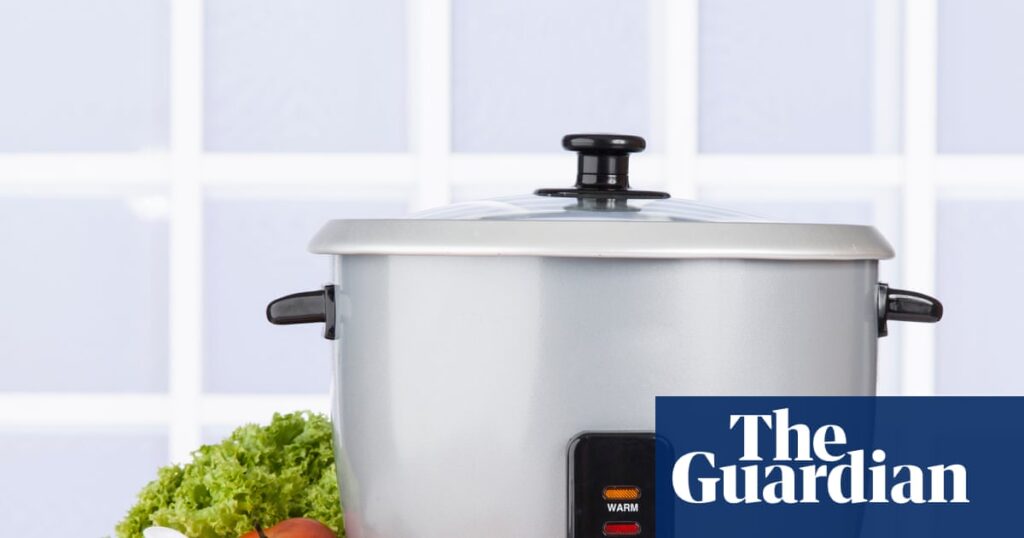As a chef, I often get asked what my style of cooking is. Officially, I specialize in Hawaii’s local food and diasporic Asian cuisines, but unofficially, or if you catch me on a tired day, I’ll say my style of cooking is “dorm room”.
Which means I can make a filling, elaborate meal out of seemingly nothing, so long as I have a rice cooker in my arsenal. It’s my “desert island appliance”, the one piece of equipment I could still thrive with if I lost my entire kitchen. And anybody can learn the same hacks and shortcuts.
A portable kitchen
Today’s rice cookers come with sometimes dozens of functions, which I thoroughly tested when I rounded up 17 of them for my “Rice Cooker Olympics”. But the most basic rice cooker – even one with just the two simple functions of “cook rice” and “keep rice warm”, is an entire kitchen encased in a little plug-in pot. Let me explain.
First, obviously, it cooks rice, from short-grain to sushi, jasmine to brown, and even mixed grains. By extension, it can also make congee, or rice porridge: the finest of breakfasts and the most comforting of one-bowl meals. All you have to do is keep adding more water, purposefully exploding rice grains into silken porridge.
It can braise meats and tofu when it’s operating at full throttle. Skip the rice, add a bit of oil to the pot, and hit start to make dishes like mapo tofu or spiced ground beef stews.
It can make fluffy, cakey Japanese pancakes. And don’t forget chawanmushi – that silken Japanese egg custard often served at the start of omakases, or chef-curated sushi meals. It steams quickly and beautifully in a rice cooker: as you set your rice to cook, halfway through the process, set a little ceramic bowl of water and egg scrambled together in the middle of the half cooked rice and then voila, when your rice is done, you also have chawanmushi.
Put in whole eggs and you’ll have soft-boiled or hard-boiled eggs, depending on timing. Hard-boiled eggs take 20 minutes and soft boiled eggs take 13 to 15 minutes. You can either set the eggs in a steamer basket set inside your rice cooker (if your cooker comes with one – the Hamilton Beach one we like does, as does the Tatung), or just put them directly into your cooking rice.
You can make soups in a rice cooker, rice pudding, and an infinite number of grains: quinoa, fonio, barley, couscous, to name just a common few.
Stick vegetables in your rice cooker and you’ll also wind up with perfectly tender broccoli, green beans, and asparagus. During the cooking process, you can put them in a ceramic bowl and set it directly into your cooking rice, or use a steamer basket attachment.
Rice cookers 201
I tested a lot of rice cookers for The Guardian’s list of the best rice cookers, and many are sophisticated devices. With added functions and settings come increased food options.
Some of the rice cookers I tested can take the thinking and preparation out of complex grains such as germinated brown rice, which is thought to have extra nutritional value. They will soak, time and baby the grains over a cooking cycle of around three hours.
Other rice cookers can pressure cook grains at high speed and they can unlock the complex, floral notes of even the most common, frankly boring, short-grain rice. They will time your congee for you, or adjust themselves to cook wild rice, mixed rice, sushi rice or jasmine rice. They’ll wake up just before you do, and make sure that the oatmeal you put in them the night prior is your steaming hot breakfast.
Some can even sanitize themselves, steaming their innards at high temperatures. Modern rice cookers come with dozens of bells and whistles.
Whether you choose the highest end Zojirushi cooker or the most basic Green Life one, look after it. Treat its inner liners like a nonstick pan and clean it by hand.
And know when you’re purchasing a rice cooker, you’re purchasing a kitchen. Get one with a handle and it can travel with you anywhere.


